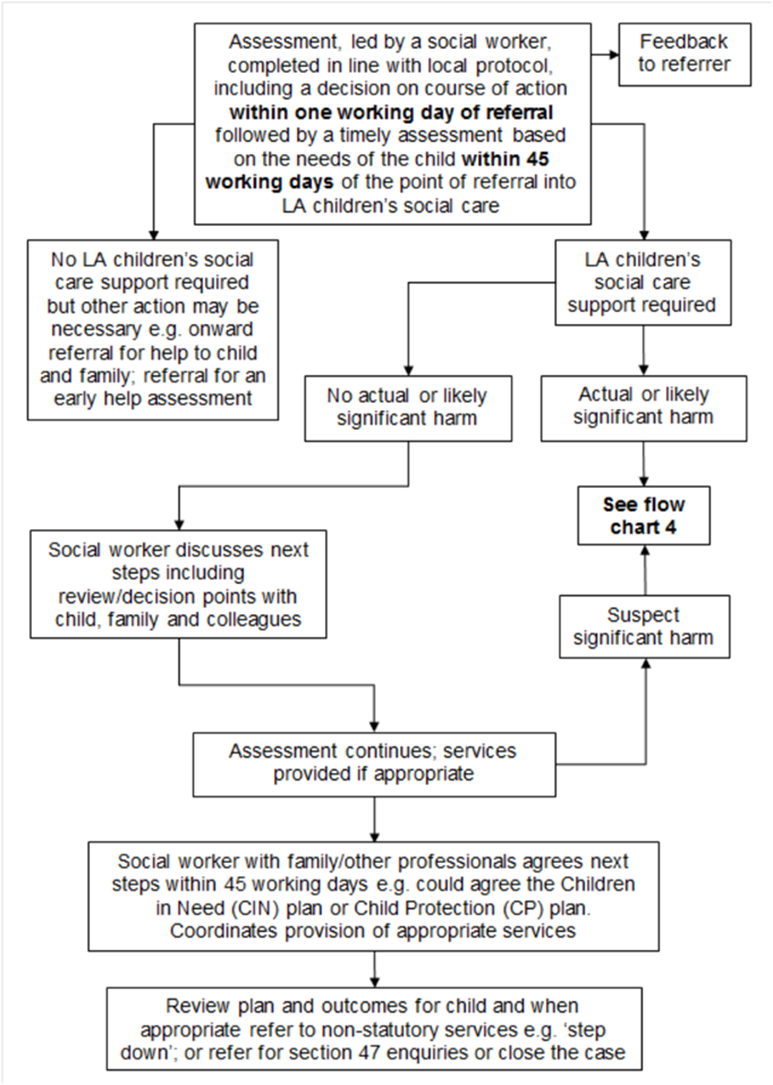
Assessment of a Child Under the Children Act 1989
Following acceptance of a referral by the local authority children's social care, a social worker should lead a multi-agency assessment under section 17 of the Children Act 1989.
1. Overview
1.1 Following acceptance of a referral by the local authority children’s social care, a social worker should lead a multi-agency assessment under section 17 of the Children Act 1989. Local authorities have a duty to ascertain the child’s wishes and feelings and take account of them when planning the provision of services. Assessments should be carried out in a timely manner reflecting the needs of the individual child as set out in this chapter.
1.2 Where the local authority children’s social care decides to provide services, a multi-agency child in need plan should be developed which sets out which agencies will provide which services to the child and family. The plan should set clear measurable outcomes for the child and expectations for the parents. The plan should reflect the positive aspects of the family situation as well as the weaknesses.
1.3 Where information gathered during an assessment (which may be very brief) results in the social worker suspecting that the child is suffering or likely to suffer significant harm, the local authority should hold a strategy discussion to enable it to decide with other agencies whether to initiate enquiries under section 47 of the Children Act 1989.
2. Purpose
2.1 Assessments should determine whether the child is in need, the nature of any services required and whether any specialist assessments should be undertaken to assist the local authority in its decision making.
3. Social workers
- should lead on an assessment and complete it in line with the locally agreed protocol according to the child’s needs and within 45 working daysfrom the point of referral into local authority children’s social care;
- should see the child within a timescale that is appropriate to the nature of the concerns expressed at referral according to an agreed plan;
- should conduct interviews with the child and family members, separately and together as appropriate. Initial discussions with the child should be conducted in a way that minimises distress to them and maximises the likelihood that they will provide accurate and complete information, avoiding leading or suggestive questions;
- should record the assessment findings and decisions and next steps following the assessment;
- should inform in writing, all the relevant agencies and the family of their decisions and if the child is a child in need, of the plan for providing support and
- should inform the referrer of what action has been or will be taken.
4. The police
- should assist other agencies to carry out their responsibilities where there are concerns about the child’s welfare, whether or not a crime has been committed. If a crime has been committed, the police should be informed by the local authority children’s social care.
5. All involved professionals
- should be involved in the assessment and provide further information about the child and family; and
- should agree further action including what services would help the child and family and inform local authority children’s social are if any immediate action is required.
6. Action taken for an assessment of a child under the Children Act 1989
